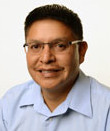Indigenising University Mathematics
Traditional Knowledge
"Traditional knowledge" is led by Henry Fowler and Veselin Jungic. This theme is wide ranging, likely to include Indigenous Astronomy, Navigation, Engineering, Fish-Farming, Kinship systems, and specific knowledge such as the Indigenous Fourier transform. Henry Fowler is a member of the Navajo Nation, based at Navajo Technical University, Chinle, Arizona, and is one of the Directors of the Navajo Math Circles program. Veselin Jungic is a teaching professor based at Simon Fraser University and has long running education collaborations with Indigenous people of the region.

What follows should be framed as a starting point for our discussion. We invite you to share your views and experiences and help us shape this segment of our project.
The notion of traditional knowledge, as “the holistic total of an indigenous people’s understanding of the world,” (1) is a complex system that allows (and invites) multiple entry points of inquiry.
The approach that we propose is built on the following three pillars:
-
The definition of traditional knowledge as stated by the World Intellectual Property Organization:
Traditional knowledge is knowledge, know-how, skills and practices that are developed, sustained and passed on from generation to generation within a community, often forming part of its cultural or spiritual identity. (2)
-
We accept Australian mathematics educator Alan Bishop’s claim that:
Mathematics, as cultural knowledge, derives from humans engaging in these six universal activities in a sustained, and conscious manner: counting, locating, measuring, designing, playing and explaining. (3)
-
We use the term mathematics in the sense of Brazilian mathematics educator Ubiratan D’Ambrosio’s definition of ethnomathematics, i.e., as a term that includes:
a very broad range of human activities which, throughout history, have been expropriated by the scholarly establishment, formalized, codified and incorporated into … academic mathematic but which also “remain alive in culturally identified groups and constitute routine in their practices. (4)
To underline the connection between Traditional Knowledge and (ethno)mathematics, as an example, we draw a parallel between a document that discusses Traditional Knowledge and an article on ethnomathematics.
In its document “Intellectual Property and Traditional Knowledge” the World Intellectual Property Organization states:
What makes knowledge “traditional” is not its antiquity: much Traditional Knowledge is not ancient or inert, but is a vital, dynamic part of the contemporary lives of many communities today. (…) Traditional Knowledge is being created every day and evolves as individuals and communities respond to the challenges posed by their social environment. (5)
In his article “Ethnomathematics and education” Marcelo Borba, a Brazilian mathematics educator, claims:When the solution of this problem involves a mathematical treatment, the solution contributes to the development of ethnomathematics in this culture. Over time, this ethnomathematics is probably going to be more efficient than the models stored in textbooks and written in codes not always accessible to a given cultural group, because it is connected to the culture where the problem was generated. (6)
Read an Extended version here.